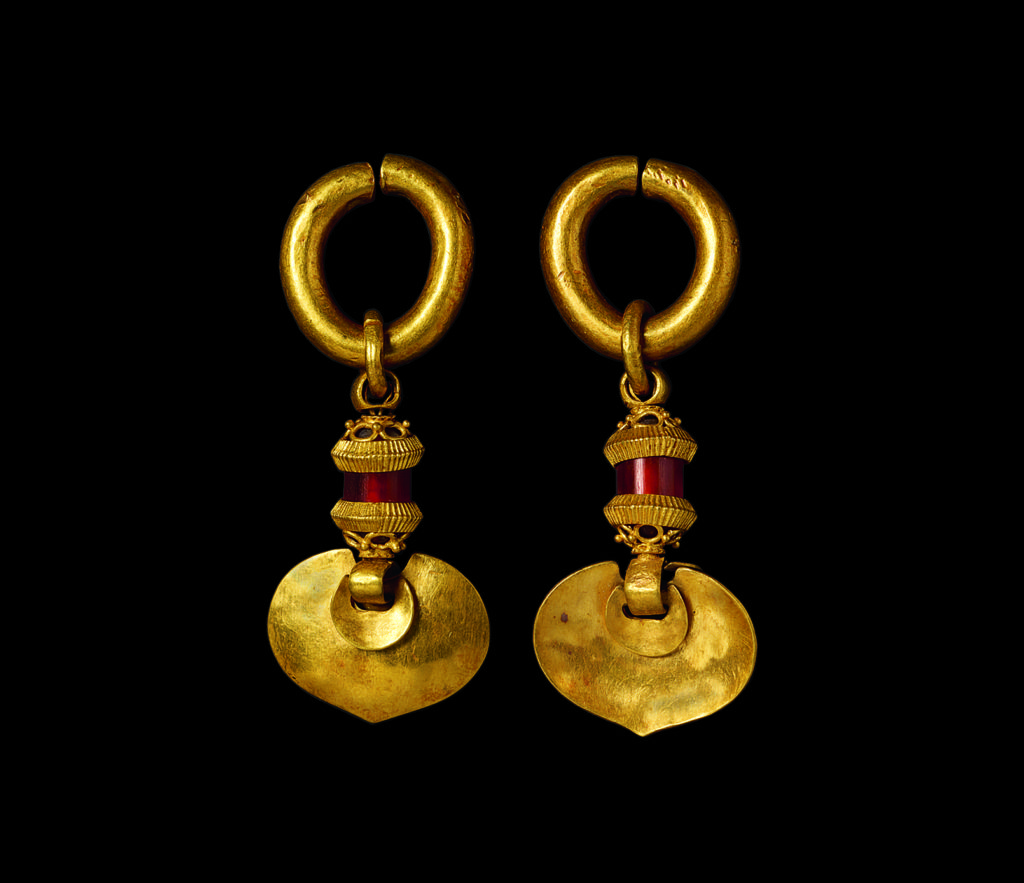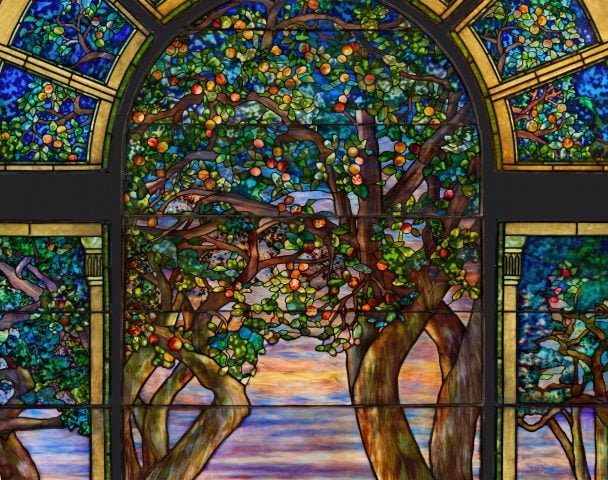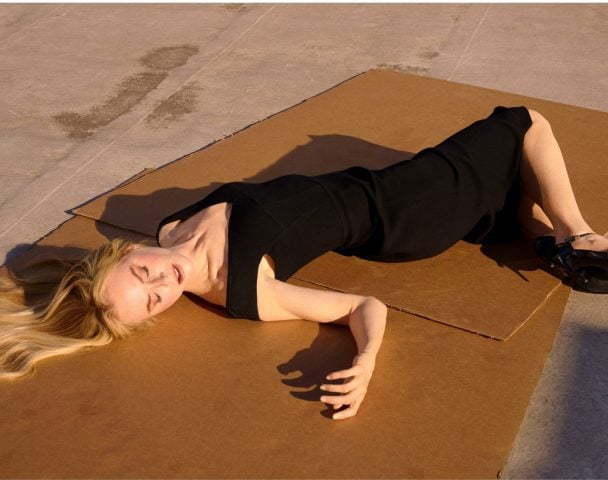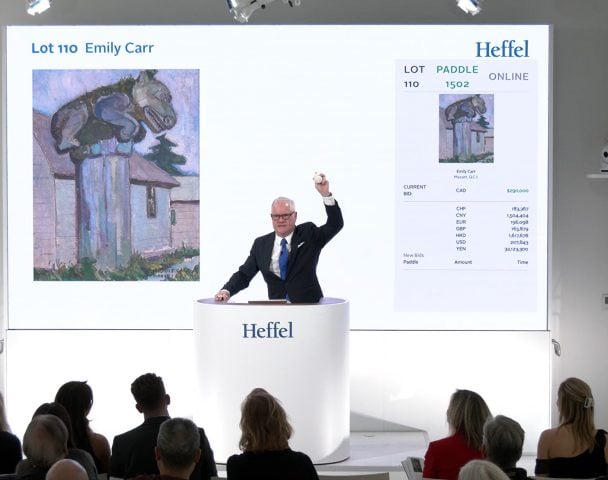New York’s Metropolitan Museum of Art has inked an agreement with the Republic of Korea to support the institution’s Korean galleries as well as underwrite public programming and scholarship. The agreement, which sees Korea writing a $800,000 check to the museum, follows a previous 2015 pact that involved South Korea’s Ministry of Culture, Sports, and Tourism paying the museum a million dollars. The new grant will support loans, special exhibitions, and public programming. The grant will also support the conservation of pre-twentieth century Korean paintings, which will involve research by art historians, conservators, and scientists.
The previous donation allowed the museum to mount the 2018 exhibition “Diamond Mountains: Travel and Nostalgia in Korean Art,” which included loans from Korean collections and featured public education programs underwritten by that 2015 million-dollar grant. Separately, twelve long-term loans from Korea are currently on view at the Met, including metalwork and ceramic objects that range in date from the fifth to the nineteenth century.
The museum will collaborate with Korean institutions, including the National Museum of Korea, on special exhibitions, loans, and scholarly exchange. The 2015 grant enabled two curators from the National Museum to come to the Met for a year as visiting scholars. The new grant will support similar visiting programs.
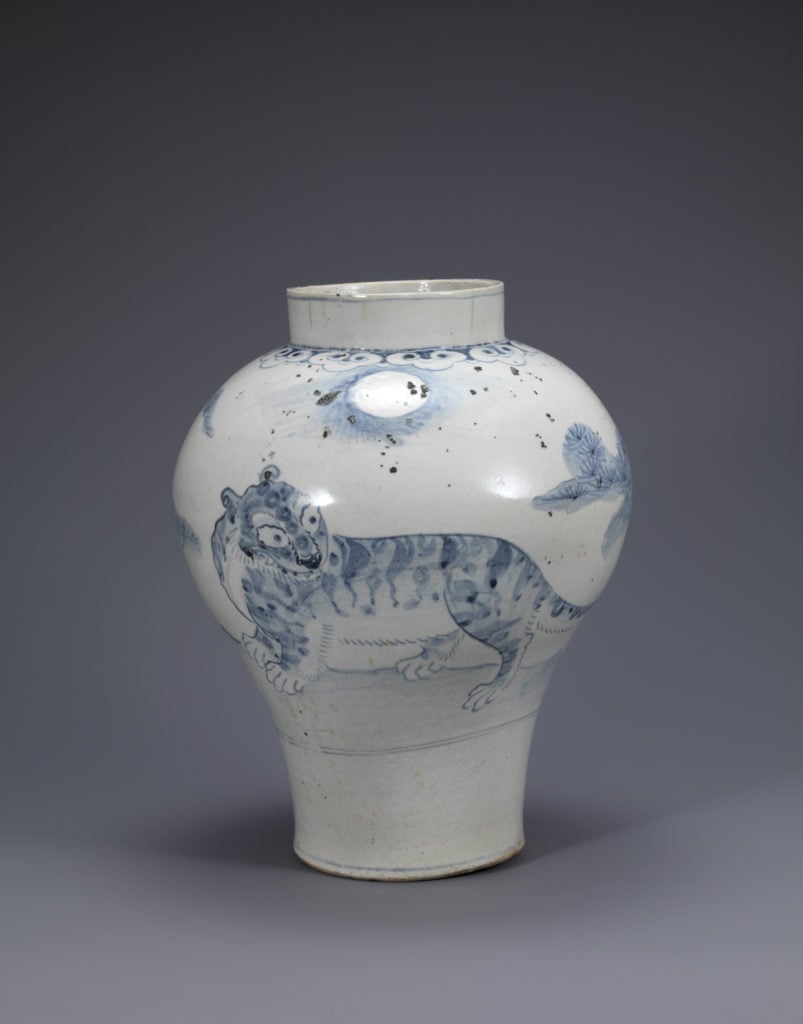
Nineteenth-century Korean jar with tiger and pine tree. Photograph courtesy the National Museum of Korea.
The Met’s president and CEO, Daniel Weiss, formalized the agreement with the executive director of the Korean Cultural Center New York, Yun Jeung Jo.
“With this gift and newly signed agreement, The Met will be able to expand our program of exhibitions, gallery displays, and publications featuring the arts of Korea and undertake new research,” said Weiss in a statement.
American museums have initiated numerous programs to augment their holdings and exhibitions of non-Western art, making up for decades of relative neglect. The Met is sinking $70 million into a renovation of its Michael C. Rockefeller wing, devoted to the arts of Africa, Oceania, and the Americas, prioritizing it over an also much-needed overhaul of its modern and contemporary galleries. The museum has also been deepening its acquisitions of the art of India, Egypt, Brazil, Mexico, “and more,” a representative recently told the New York Times.
“It is our great pleasure to extend our support of The Metropolitan Museum of Art, especially in this meaningful time when Korean culture is all the more gaining in global recognition,” said Jo. Indeed, Seoul has become a new art market hub, with artists like Lee Bul, Lee Ufan, Kimsooja, and Haegue Yang gaining ever-greater exposure in the West, and movements like Dansaekhwa, largely unknown in America until the last several years, reaching blue-chip status.
